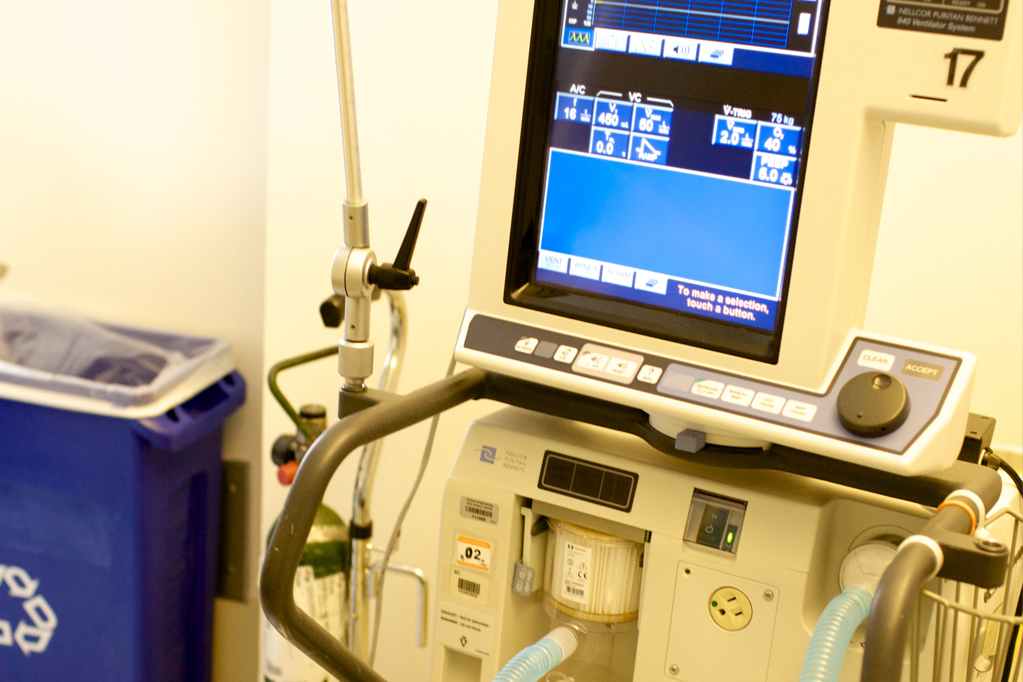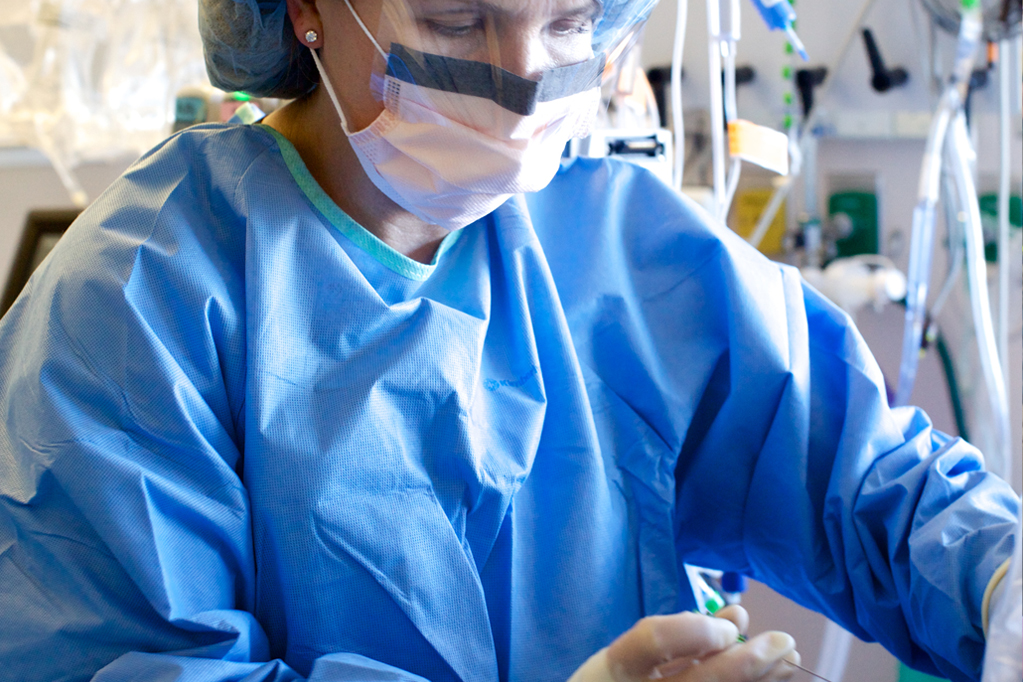
Intubation
Intubation is a brief medical procedure where a breathing tube is inserted into your trachea (windpipe) in order to allow your breathing to be supported by a breathing machine (ventilator). It is done with sedation to make sure you are asleep and don’t remember the procedure. Once the breathing tube is in place, the ICU team may decrease your sedation to allow you to be able to be awake and communicate. We will work to promote your comfort during this process.

Mechanical Ventilation
Many ICU patients need help with their breathing. This could be because their lungs are not working or because they are too sleepy to breathe on their own. A ventilator, sometimes called a breathing machine, helps patients to breathe. A tube is placed in the patient’s mouth and windpipe and is connected to a machine that pushes air into the lungs. The ICU team, respiratory therapists and nurses work together to choose the right settings on the ventilator. The ventilator supports breathing while treatments help patients to heal. Patients are unable to speak while the breathing tube is in place. When you no longer need the ventilator, the ICU team will remove the breathing tube.

Central Line
You may already have had a regular IV – these are usually placed in a small vein in your arm or hand. When you are in the ICU, you are often receiving many medications, some of which are not safe to give through a regular IV. We sometimes need to place a more specialized IV catheter into a larger vein. This is called a central line. This is inserted as part of a sterile procedure so as to prevent infection. Your team and your nurse will be inspecting your central line several times each day to make sure there are no signs of infection. We will remove it as soon as it is no longer needed.

Vasopressors
Some patients in the ICU have trouble with low blood pressure from infection (sepsis), bleeding, or trouble with the heart. We use these special medications to help raise your blood pressure to a normal range until the cause of the low blood pressure can be treated. You will sometimes hear your team refer to them as “pressors.” Like Mechanical Ventilation and CRRT, this is a temporary form of life support while your teams work to help you recover from your illness.

Continuous Renal Replacement Therapy (CRRT or Continuous Dialysis)
Many patients in the ICU have problems with their kidneys. The kidneys filter the blood, getting rid of extra salts and fluid. When the kidneys don’t work, patients may have extra fluid in their body. The extra fluid causes swelling and difficulty breathing. The kidneys not working can also cause patients to be sleepy because they can’t get rid of toxins. CRRT filters the blood to get rid of fluid, salt and toxins just like dialysis. Nephrologists (specialist kidney doctors) decide when CRRT is needed. CRRT doesn’t fix the kidneys, but can replace their function while they heal.